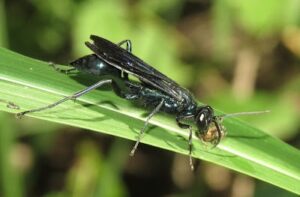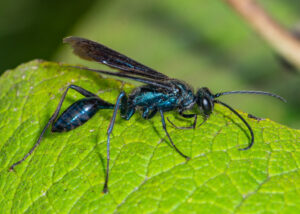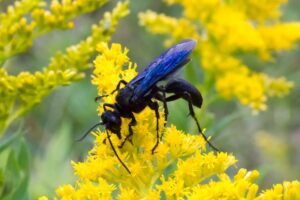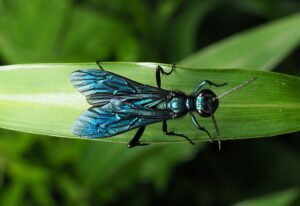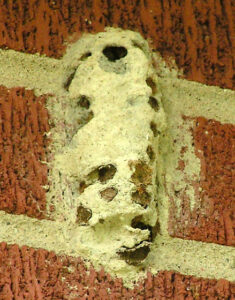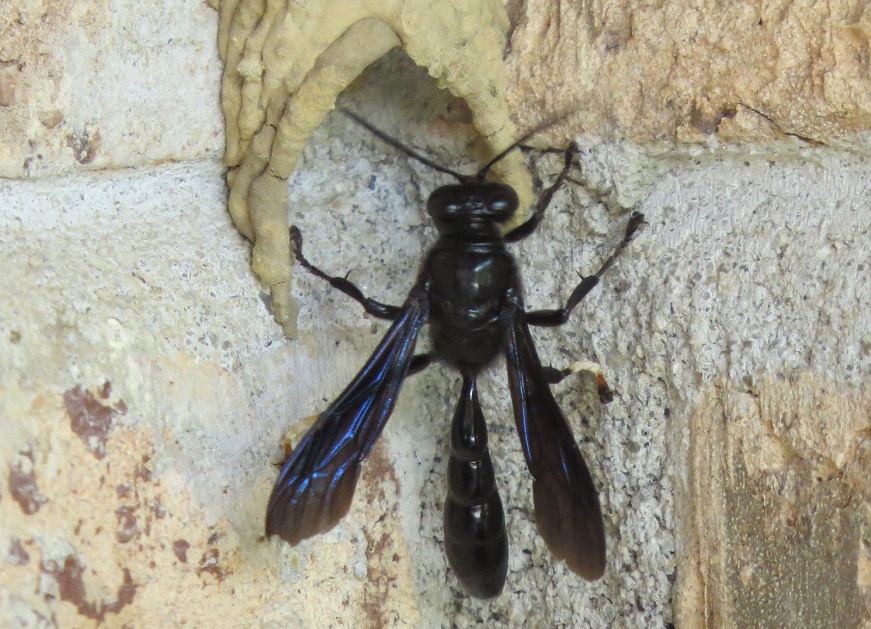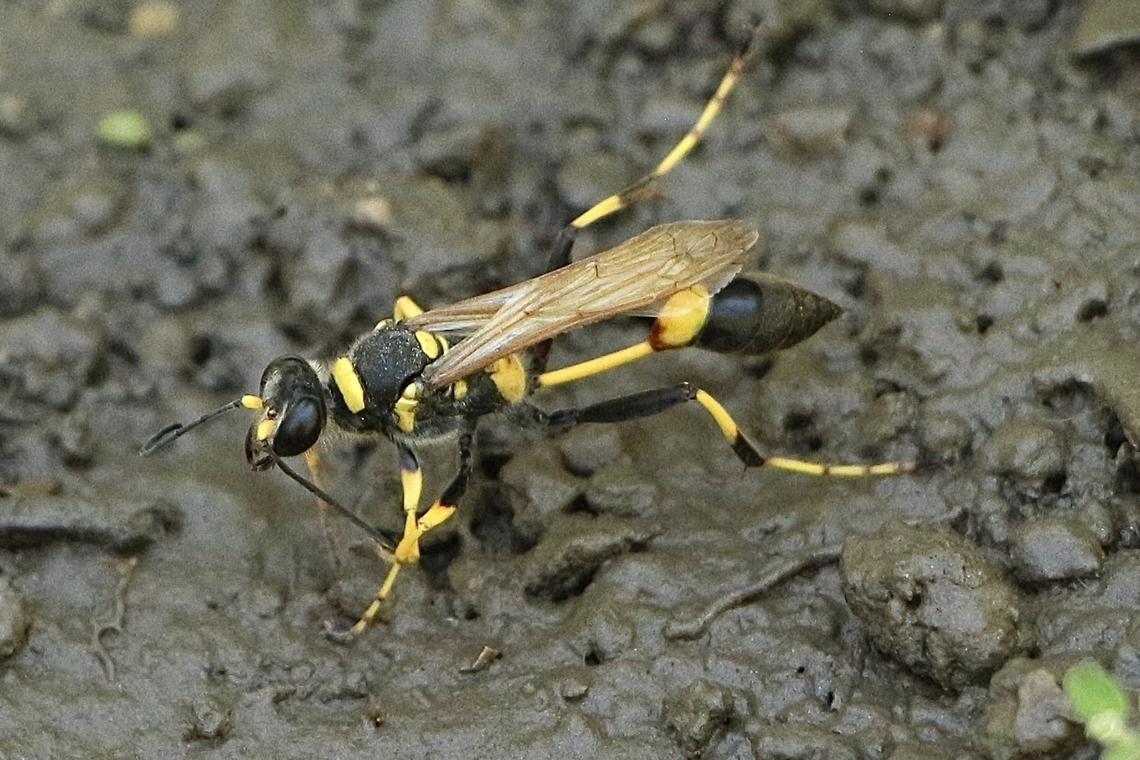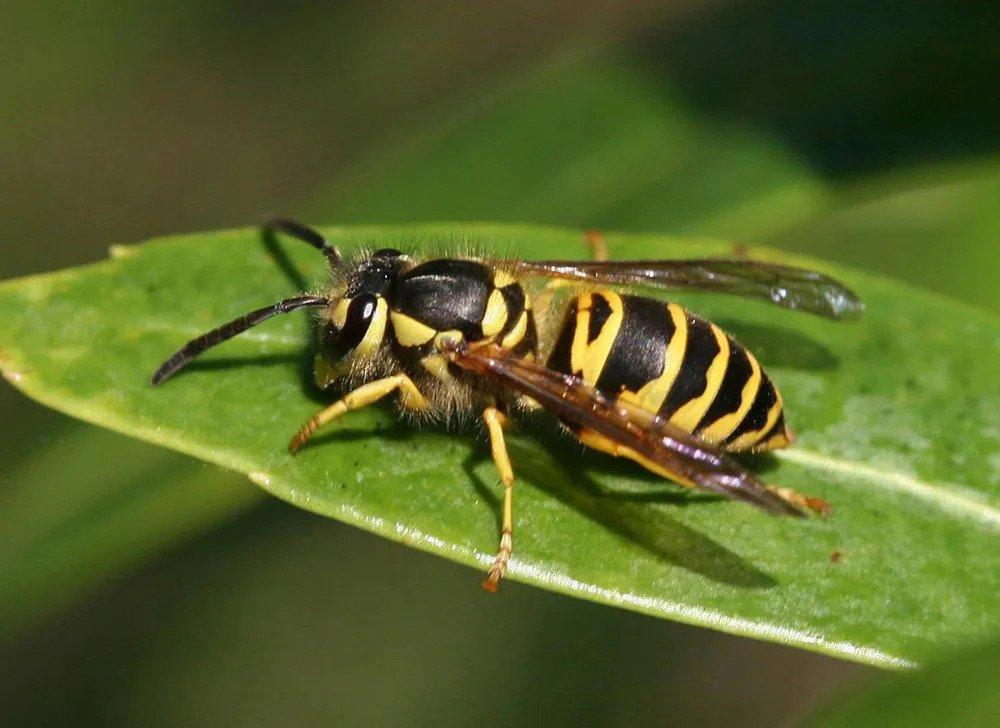Blue Mud Dauber (Chalybion californicum)
Updated on
17/11/2022The blue mud dauber or common blue mud dauber is an impressive solitary wasp endemic to the Nearctic realm. In 1867, it was first described by Henri Louis Frédéric de Saussure. It usually is calm and not aggressive towards humans.
Scientific Classification
- Class:Insecta
- Order:Hymenoptera
- Family:Sphecidae
- Genus:Chalybion
- Species:C. californicum
Conservation Status
Description
The color of the beautiful, iridescent wasp is metallic blue and black. It has a narrow petiole (waist) and a bulbous abdomen. It ranges in size from 10 to 23 mm.
Distribution: Northern Mexico to southern Canada, including most of the US. It has been introduced to Bermuda, Hawaii, Croatia, and other European countries.
Habitat: Residential areas, fields with flowers
Do They Bite/Sting: Yes.
Lifespan: One year.
Predators: Many flies and wasps parasitize the wasp.
Behavior and Characteristics
Diet
They feed on flower nectar that gives them strength for their flight. They pollinate common wildflowers like common barberry, Queen Anne’s lace, and golden zizia. It’s famous for predating venomous black widow spiders to feed their larvae. They prefer foraging on the ground or under rocks. It uses its sting to immobilize the spiders.
Nest-building
The females can build their own nests in the shadows of buildings, bridges, and rocks. But they often occupy and revamp the nests abandoned by other bees and wasps, particularly the black and yellow mud dauber. It removes the latter’s larvae and captive spiders and replaces them with its own eggs and freshly caught spiders.
Life Cycle
1. Egg Stage
A new nest is built for each egg. The females lay an egg on the last spider stuffed into the nest before sealing its entrance.
2. Larva Stage
The cream-colored, leg-less, maggot-like larva grows to a length of up to 1 inch.
3. Pupa Stage
The larvae pupate in a thin silk cocoon and spend the winter in the nest.
4. Adult Stage
They emerge the following spring as adults. The males cannot sting as they lack an ovipositor. There are multiple generations occurring in a year.
Comparison with Similar Species
Steel-Blue Cricket Hunter
The steel-blue cricket hunter (Chlorion aerarium) has similar looks but is larger than the blue mud dauber wasp. It is also brighter and hairier.
Getting Rid of Blue Mud Daubers
Though the wasp is not dangerous to humans, the presence of the blue mud dauber’s nests in houses and structures is unsightly. They can be removed manually by a putty knife or a strong water stream from a garden hose.
Source
bugeric.blogspot.com, bugguide.net, disoriented.net, inaturalist.ca, objects.liquidweb.services




